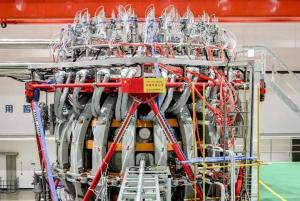Milestone for China's HL-3 device
"This [latest milestone] once again broke the operation record of China's nuclear fusion devices with magnetic confinement, overcoming many technical challenges. This milestone holds great importance in China's nuclear fusion energy development, signifying a crucial step forward in the research of high-performance nuclear fusion plasma operation," said the press release released by the China National Nuclear Corporation, CNNC.
The success of operation in H-mode is the result of upgrades to the device's heating, operation and control, diagnostic, and power supply system. The next goal for HL-3 is to increase the fusion triple product—a plasma's particle density, energy confinement time, and ion temperature—to attain the kind of high plasma performance that is needed to study frontier fusion plasma physics.
Read more about the milestone on the CNNC and CGTN websites.


